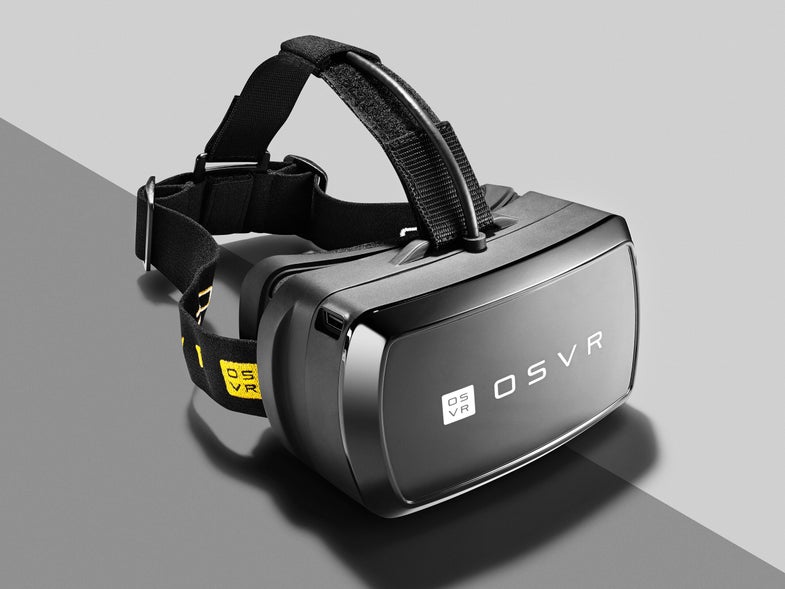Razer OSVR Is A Printable, Hackable Virtual Reality Headset
Make your own reality

We may earn revenue from the products available on this page and participate in affiliate programs. Learn more ›
There’s a growing problem in the virtual reality (VR) industry: Filmmakers and game developers don’t want to produce content for a headset few people have access to. And hardware manufacturers don’t want to build accessories for headsets that don’t have content. Razer’s new open-source virtual reality (OSVR) platform could eliminate this catch-22, clearing the way for more VR experiments.
Using Razer OSVR, hackers and companies alike can build software that works on multiple VR operating systems and headsets. The platform supports popular videogame engines, gesture controls, and head-mounted displays (including industry leader Oculus Rift DK2).
Razer also released the OSVR Hacker Dev Kit, which comes with a modifiable VR headset. The kit ships with open-source hardware, and the circuit boards are modular, so they can be swapped out for new ones as they’re released. Razer has also made OSVR’s schematics readily available as a free download–so anyone can 3-D print or construct a headset.
The OSVR Hacker Dev Kit comes equipped with a 5.5-inch Full HD display, similar in size and resolution to the screen used in the Oculus Rift DK2, plus a sensor hub that includes an accelerometer, gyroscope, and compass to enable head-tracking. Although the development kit is geared toward the technically savvy, at such a low price point, most anyone can afford one–if for no other reason than catching a glimpse into the future of VR.
This article was originally published in the March 2015 issue of Popular Science, under the title “Make Your Own Reality.”